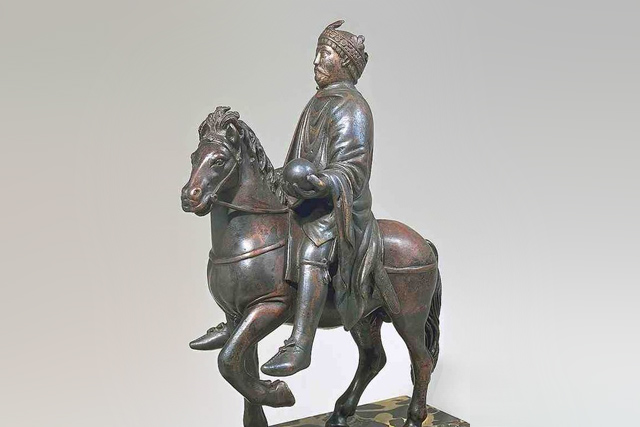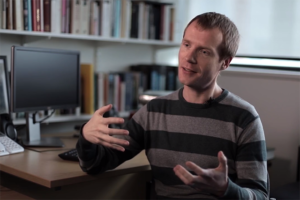55,000-year-old skull as an evidence of modern man...
The discovery of a 55,000-year-old partial skull in Northern Israel provides new insights into the migration o...

This is a bronze statuette of a Frankish King, who is traditionally identified as Charlemagne. The unique artifact is an example of the plastic arts movement during the Carolingian Renaissance. It was created in a realistic way imitating the equestrian statues of Late Antiquity (mainly those of Marcus Aurelius). The horse rider was made presumably for the Archbishop Drogo of Metz in 870 AD. In his left hand the rider is holding an orb and in his right hand he is supposed to be holding a staff or sword, but this element has been lost over time. The horse part of statuette was made in the Late Antiquity and re-used for this sculpture. Initially the statuette was meant to be kept in the Metz Cathedral Treasury, and indeed it was there until the XVIII century. Today one can see it in the Louvre Museum.

Contemporary scholars do not have enough evidence to claim that the person depicted in the statuette is Charlemagne. The likeness between the rider and the profile of Charlemagne found on the relevant coins of the same time period (in particular that on the famous denier coined in Frankfurt between 812 and 814, today kept in the collection of the National Library of France) does not seem to be convincing. However, there is some resemblance to the description made by Charlemagne’s biographer Einhard, who writes about the King’s sturdy constitution, short neck, and thick bushy moustache. Some researchers suggest that the rider could have been Charles the Bold, the grandson of the great King of Franks. In this case the statuette was probably created for Charles the Bold’s coronation in Metz, after his conquest of Lotharingia in 869-870.
There is a popular hypothesis in contemporary science suggesting that this statuette does not represent any particular king, but is a symbolic image of the Great King of Franks, who is a mighty warrior and the ruler of the world following the tradition of the kings of Antiquity. In this sense the statuette is a prominent symbol of Carolingian Era with its close connection to the Roman political and artistic legacy. It represents the idea of ‘translatio imperii’ (Latin for ‘transfer of rule’) from the Romans to the Franks—one of the key ideas in the Carolingian political ideology. According to this theory, the Roman Empire is the fourth world power which, having replaced Assyrian-Babylonian Empire, Medo-Persian, and Greek Macedonian Empires, is supposed to mark the end of the earthly history of humanity. This Empire was started with the Incarnation of Jesus Christ on Earth and will be brought to an end with his Second Coming in a thousand years. It can neither die, nor disappear, but is transferred from one people to another until the Judgment Day comes. The origins of this tradition ascend to the works of the Fathers of the Church. Carolingians, who recreated the Empire in the West in 800, considered themselves to be its descendants and keepers.
The statuette does not only reconstruct the esthetics of the Late Antiquity, but is literally a combination of Roman (the horse) and Frankish (the horseman) esthetic elements. Moreover, it is apparently the only depiction of a Frankish ruler depicted as a warlord that has survived. Such a particular image of the ruler was very appealing in Metz, where the Carolingian family tomb is located and where Drogo, Charles the Bold’s uncle, was a bishop. On the other hand, when we compare the statuette with the depictions of Charles made in Reims or in Tours, where the Western Frankish bishops claimed total moral and political control over the secular rulers, the most prominent motives in the images of the King are those of modesty and humility.

The discovery of a 55,000-year-old partial skull in Northern Israel provides new insights into the migration o...

Historian Rory Naismith on the monk Ælfric Bata, the formation of the English monetary system, and the silver ...

Historian and Philosopher of Science Liba Taub on the definition of science, Aristotle, and the ancient ideas ...